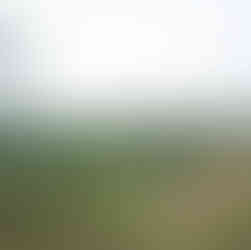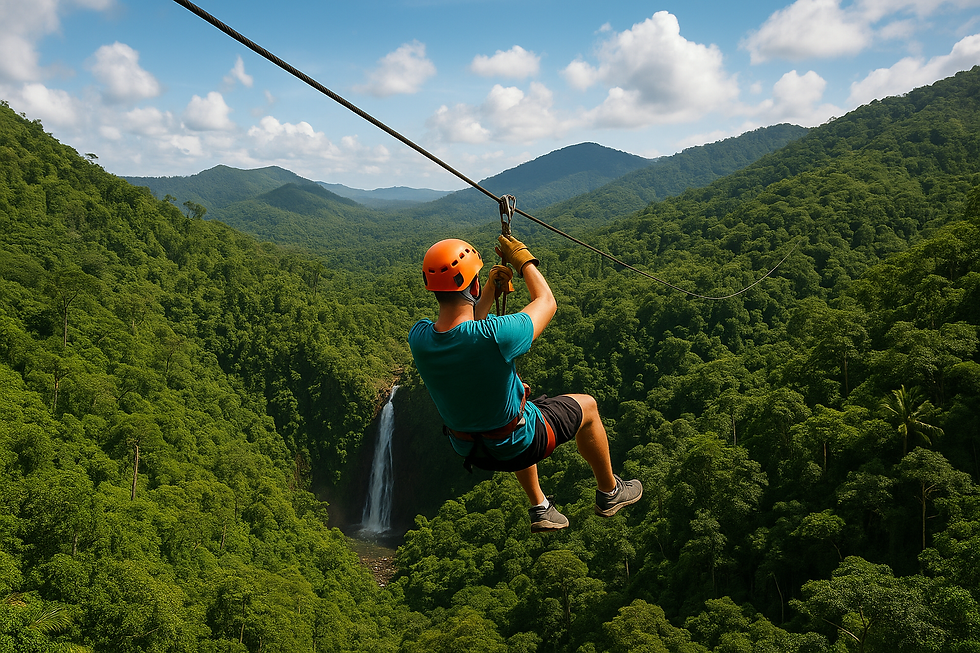Exploring the Cockscomb Basin Wildlife Sanctuary & Jaguar Preserve, Belize's Top Tour From Placencia
- Hotels by FPM

- Sep 25, 2023
- 6 min read

Table Of Content
Introduction

Nestled in the heart of Belize lies a pristine paradise, the Cockscomb Basin Wildlife Sanctuary. It is 1.5 hours drive from Placencia or 37 miles (59 kilometers). This untouched wilderness is not just a haven for nature enthusiasts but also a vital refuge for jaguars and a plethora of other fascinating wildlife. Let's embark on a journey through the lush jungles of Belize, uncovering the secrets of the Cockscomb Basin Wildlife Sanctuary.
Exploring the Sanctuary
The History and Foundation

The Cockscomb Basin Wildlife Sanctuary & Jaguar Preserve in Belize was established in 1986, making it the world's first jaguar preserve. Dr. Alan Rabinowitz, a renowned conservationist, played a pivotal role in establishing the sanctuary. The sanctuary covers an expansive 128,000 acres of tropical rainforest, making it one of the largest protected areas in Belize.
The Cockscomb Basin Wildlife Sanctuary & Jaguar Preserve is an important habitat for jaguars and other wildlife. It is also a popular tourist destination, and it plays an important role in Belize's economy.
Here is more details on the history of the sanctuary:
In the early 1980s, Dr. Rabinowitz began conducting research on jaguars in the Cockscomb Basin. He discovered that the area had a high density of jaguars, and he began to advocate for its protection.
In 1984, the Belizean government declared the Cockscomb Basin a Forest Reserve.
In 1986, the Belizean government declared the Cockscomb Basin a Jaguar Preserve, making it the world's first.
The sanctuary has since been expanded to include over 128,000 acres of tropical rainforest.
Flora and Fauna
The Cockscomb Basin Wildlife Sanctuary & Jaguar Preserve is home to a diverse range of flora and fauna, including:
Flora: towering mahogany trees, vibrant orchids, the majestic Ceiba tree, and many other species of plants
Fauna: over 290 species of birds, including toucans, macaws, and hummingbirds; 50 species of reptiles, including snakes, lizards, and crocodiles; 25 species of amphibians, including frogs and toads; and a variety of mammals, including jaguars, tapirs, monkeys, and peccaries
The jaguars are the real stars of the show, but there is something for everyone to enjoy at the Cockscomb Basin Wildlife Sanctuary & Jaguar Preserve.
The Jaguar: King of the Sanctuary
Jaguar Conservation

The Cockscomb Basin Wildlife Sanctuary is an essential sanctuary for jaguars. With an estimated 80 to 100 jaguars roaming its depths, it represents a significant portion of Belize's jaguar population. The sanctuary is home to a variety of conservation efforts aimed at protecting jaguars and their habitat.
Here are some specific examples of jaguar conservation efforts at the Cockscomb Basin Wildlife Sanctuary:
Monitoring: Scientists and conservationists use camera traps and other methods to monitor jaguar populations and track their movements. This information helps researchers to better understand jaguar ecology and to identify threats to the species.
Habitat protection: The sanctuary is protected from logging, hunting, and other activities that could harm jaguars or their habitat. This helps to ensure that jaguars have a safe place to live and thrive.
Education and outreach: The sanctuary works to educate the public about the importance of jaguars and the need for conservation. This helps to build support for jaguar conservation and to reduce human-jaguar conflict.
Jaguars are a vital part of the Belizean ecosystem, and the Cockscomb Basin Wildlife Sanctuary is playing an important role in their conservation. Thanks to the efforts of the sanctuary and its partners, jaguars have a brighter future in Belize.
Jaguar Habitats
Jaguars thrive in the Cockscomb Basin Wildlife Sanctuary's dense tropical forests, where they find abundant prey such as deer, peccaries, and tapirs. Jaguars are also known to be expert swimmers, and the sanctuary's numerous rivers and streams provide ample opportunities for hunting and fishing.
Experiencing the Sanctuary
Hiking Trails

Exploring the Cockscomb Basin Wildlife Sanctuary on foot is an unforgettable adventure. Well-maintained hiking trails wind through the pristine rainforest, offering visitors the chance to immerse themselves in the natural beauty of Belize. The Tiger Fern Trail and Ben's Bluff Trail are two of the most popular trails in the sanctuary, offering stunning views of the lush landscape and opportunities to spot wildlife such as jaguars, tapirs, and monkeys.
Waterfall Adventures
The Cockscomb Basin Wildlife Sanctuary is dotted with pristine waterfalls, the most famous being Tiger Fern Falls. This stunning waterfall cascades over two tiers into a crystal-clear pool below, surrounded by lush rainforest vegetation. Visitors can take refreshing dips in the cool waters and soak in the natural beauty of the surroundings.
Birdwatching
Bird enthusiasts are in for a treat at the Cockscomb Basin Wildlife Sanctuary, a birdwatcher's paradise. With over 290 species of birds, including the keel-billed toucan, the scarlet macaw, and the great curassow, there is something for everyone to enjoy.
The sanctuary's diverse habitats, including rainforest, rivers, and streams, support a wide variety of bird species. Visitors can spot birds of prey, such as hawks and eagles, soaring overhead; colorful toucans and macaws feasting on fruits and nuts; and hummingbirds flitting among the flowers.
The best time for birdwatching in the sanctuary is early in the morning or late in the afternoon, when the birds are most active. Visitors can explore the sanctuary's hiking trails on their own or join a guided birdwatching tour.
Conservation and Education
Visitor Center

The Cockscomb Basin Wildlife Sanctuary's visitor center is a great place to learn about the sanctuary and its importance to jaguars and other wildlife. The visitor center features educational displays, interactive exhibits, and a gift shop. Visitors can also watch a film about the sanctuary and its conservation efforts.
Knowledgeable guides are available to answer questions and provide information about the sanctuary's flora and fauna. The visitor center also offers a variety of programs and activities for visitors of all ages, including guided hikes, birdwatching tours, and educational workshops.
Volunteer Opportunities

Yes, the Cockscomb Basin Wildlife Sanctuary offers volunteer programs for those passionate about conservation. This hands-on experience allows individuals to contribute directly to the protection of jaguars and their habitat.
Volunteer opportunities at the sanctuary include:
Jaguar monitoring: Volunteers help to monitor jaguar populations and track their movements using camera traps and other methods. This data is used to inform conservation efforts and to protect jaguars from threats such as poaching and habitat loss.
Habitat restoration: Volunteers help to restore and maintain the sanctuary's habitat by planting trees, removing invasive species, and building trails. This helps to ensure that jaguars and other wildlife have a safe and healthy place to live.
Education and outreach: Volunteers help to educate the public about jaguars and the importance of conservation. This includes giving presentations at schools and community groups, developing educational materials, and working with social media.
Volunteer programs at the Cockscomb Basin Wildlife Sanctuary are typically 2-4 weeks long. Volunteers are responsible for their own travel and accommodation expenses.
The Cockscomb Basin Wildlife Sanctuary & Jaguar Preserve is a Testament to the Importance of Biodiversity

The Cockscomb Basin Wildlife Sanctuary is more than just a natural wonder; it's a testament to the importance of preserving our planet's biodiversity. From the graceful jaguars to the vibrant birdlife, every aspect of this sanctuary is a testament to the delicate balance of nature.
The sanctuary is home to an incredible array of wildlife, including jaguars, tapirs, monkeys, peccaries, snakes, lizards, and over 290 species of birds. Visitors can explore the sanctuary's dense rainforests, crystal-clear rivers, and pristine waterfalls on foot or join a guided tour.
The Cockscomb Basin Wildlife Sanctuary is also an important center for conservation. The sanctuary's staff work tirelessly to protect jaguars and other wildlife from threats such as poaching and habitat loss. Visitors can learn about the sanctuary's conservation efforts and how they can help to protect jaguars and other wildlife at the sanctuary's visitor center.
If you're seeking an adventure that combines conservation with awe-inspiring beauty, look no further than the Cockscomb Basin Wildlife Sanctuary.
How to Enhance Biodiversity

There are many things that we can do to enhance biodiversity in our own lives. Here are a few ideas:
Plant native trees and shrubs in your yard.
Create a pollinator garden.
Reduce your use of pesticides and herbicides.
Avoid buying products that contain palm oil or other ingredients that contribute to deforestation.
Support sustainable agriculture and forestry practices.
Donate to conservation organizations that are working to protect biodiversity.
By taking these steps, we can all help to create a healthier and more biodiverse planet for future generations.
FAQs
1. How can I visit the Cockscomb Basin Wildlife Sanctuary?
To visit, you can arrange guided tours through authorized operators or explore the sanctuary's trails independently.
2. Is it safe to encounter jaguars in the sanctuary?
Jaguars are elusive and rarely seen by visitors. It's advisable to keep a safe distance from all wildlife.
3. What should I bring for a visit to the sanctuary?
Essentials include comfortable hiking shoes, insect repellent, a water bottle, and binoculars for birdwatching.
4. Are there accommodations within the sanctuary?
Accommodations are available in nearby villages like Maya Center, Hopkins and Placencia, offering various options for lodging.
5. How can I support jaguar conservation efforts at the sanctuary?
You can support conservation by donating to reputable organizations dedicated to preserving the sanctuary and its wildlife.
Remember, your visit to the Cockscomb Basin Wildlife Sanctuary can be a transformative experience, connecting you with the wonders of nature while contributing to the protection of Belize's rich biodiversity.












































































Comments